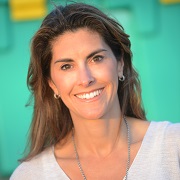By Krystin Gollihue
In 2010, a magnitude 7.0Mw earthquake hit Haiti. Nearly 1.5 million lost their homes, but in the immediate aftermath, nonprofits were on the ground filling the gap between disaster and international aid. Kerri Murray was on the ground in 2010, and noticed that there was one organization that was providing immediate assistance before all others, one organization that was most visible through all the chaos: ShelterBox.
Murray is now President of ShelterBox USA, a nonprofit organization dedicated to providing emergency shelter and tools for displaced families. ShelterBox deploys emergency kits to disaster or conflict areas that contain the simple, necessary, but often overlooked necessities for people to sustain themselves after they’ve lost everything: shelter. Boxes typically come with an adaptable and durable family emergency tent for humanitarian purposes, cooking equipment, a water purification unit, water storage containers, solar lights, mosquito nets, a waterproof ground mat, a blanket, a tool set, and a children’s toy set. They originally formed in 2000 as a partnership with Rotary International and the ShelterBox USA affiliate became a 501c3 in 2004. As of 2018, they have responded to 300 disasters and crisis events in over 100 countries, with over 1.3 million sheltered through a ShelterBox.
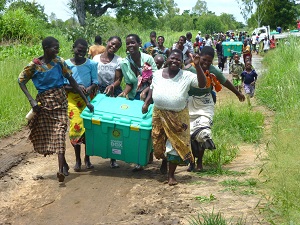 Over the years, ShelterBox has seen that they are in need of more assessment in how the organization deploys boxes. “We had been responding to a lot of earthquake and hurricane situations. Sometimes families didn’t need the whole box but they needed parts of it in order to temporarily repair their lives.” While boxes in recent years still aim to fulfill Shelterbox’s “no family left behind” mission, the organization has moved to a more beneficiary model, tailoring relief to specific disaster events. “Every disaster is different, so the needs of every family who receives our boxes are going to be different,” Murray says. Because of this assessment, ShelterBox unveiled the ShelterKit, which is custom packed with vital hardware including toolkits, ropes, fasteners and heavy-duty tarps that can be used to
Over the years, ShelterBox has seen that they are in need of more assessment in how the organization deploys boxes. “We had been responding to a lot of earthquake and hurricane situations. Sometimes families didn’t need the whole box but they needed parts of it in order to temporarily repair their lives.” While boxes in recent years still aim to fulfill Shelterbox’s “no family left behind” mission, the organization has moved to a more beneficiary model, tailoring relief to specific disaster events. “Every disaster is different, so the needs of every family who receives our boxes are going to be different,” Murray says. Because of this assessment, ShelterBox unveiled the ShelterKit, which is custom packed with vital hardware including toolkits, ropes, fasteners and heavy-duty tarps that can be used to 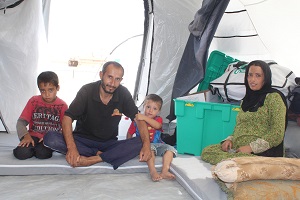 build a shelter, repair damaged buildings and begin to rebuild a home. ShelterKits are 10% of the cost of the original boxes and often contain a mixture of other essentials, such as solar lights, mattresses and water containers to help people return to normality as soon as possible. Along with ShelterKits, ShelterBox also has utilized local resources that can be replenished to help sustain the tools they deploy to families in need. In one disaster in Chad, they were able to use reeds to help rebuild certain structures. While the reeds didn’t last long, they were replenishable and allowed families to receive aid while saving resources.
build a shelter, repair damaged buildings and begin to rebuild a home. ShelterKits are 10% of the cost of the original boxes and often contain a mixture of other essentials, such as solar lights, mattresses and water containers to help people return to normality as soon as possible. Along with ShelterKits, ShelterBox also has utilized local resources that can be replenished to help sustain the tools they deploy to families in need. In one disaster in Chad, they were able to use reeds to help rebuild certain structures. While the reeds didn’t last long, they were replenishable and allowed families to receive aid while saving resources.
Murray says that while ShelterBox’s model is beneficiary focused, it also relies on pre-positioning aid in strategic locations to help ensure that there is fast and efficient deployment of what is most needed and most appropriate for that region and disaster. “The reason we’re able to scale up and be in so many places at one time is because we have hundreds of civilian volunteers,” she notes. Volunteers in the ShelterBox Response Team (SRT) have undergone rigorous disaster relief training complete with webinars, mock deployments, and an annual live deployment. The SRT operates similarly to a military reserve force, ready to serve when disaster hits a nearby area.
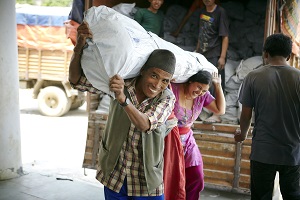 ShelterBox’s success comes from what Murray calls a “business-minded approach.” From her years in corporate pharmaceuticals, Murray understands the need to be adaptive to the ever-changing needs of the world and the disasters that come with it. Recently, ShelterBox has developed a new strategic vision called Vision2025: to serve one million people annually, about 10 times the number of people to whom they currently provide relief. In order to accomplish this vision, ShelterBox is working closely with the people they serve to be more efficient and focused. “We aren’t in a silo,” Murray says. “Partners are important. When we go into humanitarian situations and are scaling up, we work with local NGOs and coordinate to avoid duplication.” Their partnership with Rotary International has continued to be integral to the success of the organization, and the distributed deployment network of the SRT helps build investment and involvement on the ground.
ShelterBox’s success comes from what Murray calls a “business-minded approach.” From her years in corporate pharmaceuticals, Murray understands the need to be adaptive to the ever-changing needs of the world and the disasters that come with it. Recently, ShelterBox has developed a new strategic vision called Vision2025: to serve one million people annually, about 10 times the number of people to whom they currently provide relief. In order to accomplish this vision, ShelterBox is working closely with the people they serve to be more efficient and focused. “We aren’t in a silo,” Murray says. “Partners are important. When we go into humanitarian situations and are scaling up, we work with local NGOs and coordinate to avoid duplication.” Their partnership with Rotary International has continued to be integral to the success of the organization, and the distributed deployment network of the SRT helps build investment and involvement on the ground.
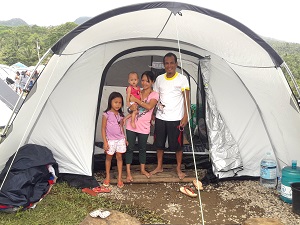 Of course, there are challenges to any work that involves disaster relief. The hardest decision for Kerri Murray is to say no, to decide who ShelterBox provides aid to. Additionally, ShelterBox is no stranger to the issue of funding. “The reality is that the majority of people who think about giving to a disaster relief NGO do it on the worst day ever, the day of,” Murray says. “The headlines don’t cover what we do. It doesn’t garner the private charitable support but it’s saving lives.”
Of course, there are challenges to any work that involves disaster relief. The hardest decision for Kerri Murray is to say no, to decide who ShelterBox provides aid to. Additionally, ShelterBox is no stranger to the issue of funding. “The reality is that the majority of people who think about giving to a disaster relief NGO do it on the worst day ever, the day of,” Murray says. “The headlines don’t cover what we do. It doesn’t garner the private charitable support but it’s saving lives.”
And it’s doing so by being adaptable and coordinated. ShelterBox has been providing aid to families in disaster and crisis situations while also applying for-profit and beneficiary models to their nonprofit work. By distributing training, creating an adaptable deliverable for families in need, and partnering with volunteers and organizations who can provide help on the ground, ShelterBox has instilled humanity into efficiency and saved lives.
Kerri Murray serves as President for the international disaster relief charity, ShelterBox USA. Murray has worked since 2009 in disaster relief, including five years at Direct Relief, where she served as Vice President, often working on the front lines of disaster. Prior to working in nonprofits, Murray spent 13 years as a marketing executive for GlaxoSmithKline Pharmaceuticals, living and working in the U.S. and Europe. She is a member of the Montecito Rotary Club and board President for GIRLS ROCK, a nonprofit that empowers young girls through music education. Kerri has a 14 year-old daughter, Sofia, who loves to play guitar, sing and perform in off-Broadway musicals.
Krystin Gollihue is a PhD candidate in the Communication, Rhetoric & Digital Media program at NC State University.


